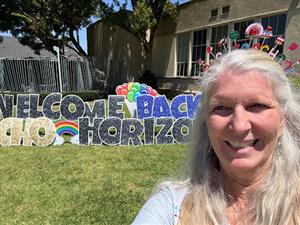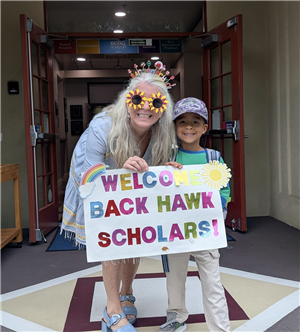-
A Brilliant North Star: Launching the Year With Purpose and Optimism
Posted by Peggy Procter on 8/26/2025 1:00:00 PM

I continue to float on clouds after the amazingly joyful first week back to school. Having our young scholars, who have all grown like beanstalks this summer, back in the building brings so much joy and laughter back to campus. Our teachers are absolutely crushing it, spreading exuberant love to their students as they teach them classroom routines, yard safety, and daily schedules. Our Parent Association is busily leading so many fun events that will build deeper connections. Our sixth graders are already owning their roles as school leaders, and with them at the helm, there is nothing that we can’t accomplish!
As we start the school year, I’m inspired by our new mission statement, which was shared with our families last week by our phenomenal Board chair and alum parent Ziad Toubassy.
Echo Horizon School’s mission is to cultivate a joyful community where children blossom into capable scholars and bold explorers of new possibilities. Through our pioneering co-enrollment model, we unite deaf and hard of hearing students with hearing peers, instilling lifelong communication skills and an authentic respect for diversity. Our graduates lead with kindness and integrity, and venture forth into the world with confidence and purpose.
First, I’m inspired by the Board’s dedication to our school. They grappled for over a year – getting feedback, writing, and re-writing – to make sure that the mission was true to who we are and what we aspire to. The Leadership team, faculty, and staff at Echo Horizon are wholeheartedly committed to supporting our new mission this year and beyond.
In grade level classrooms and specialists, our students will “blossom into capable scholars and bold explorers” under the mentorship of the best teachers in the universe. They will show their “authentic respect for diversity” as they advocate for self and others and welcome our newest students into our community with care and kindness. They will practice their strong “communication skills” as they represent Echo as effective public speakers by presenting their findings on projects and sharing their stories with prospective families at admissions events. They will show their “confidence and purpose” as they “venture forth” into the community to serve, to spread love, and to make the world a better place.
While of course, a great day is any day where I get to don a colorful headband and goofy glasses, this first day was the greatest of all as I lead with abundant optimism knowing that our new mission will serve as a brilliant north star.
- Echo Horizon School
- Educators' Blog

